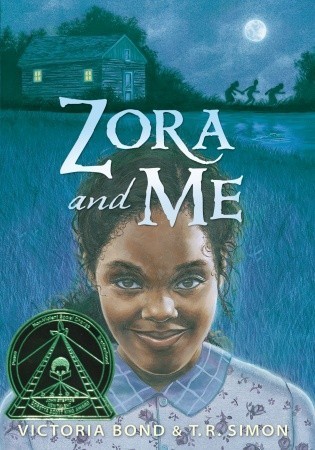What do you think?
Rate this book


192 pages, Hardcover
First published October 12, 2010
Drenched in sense of place and time, Zora and Me brings the Harlem Renaissance author Zora Neale Hurston to life as a spunky ten year old, growing up in turn of the century (19th to 20th) Eatonville, Florida, the first incorporated all Black town that Hurston paints so well in her autobiography, Dust Tracks on a Road, and her novel Their Eyes Were Watching God. Told from the point of view of Zora's friend, Carrie, the novel is rich in language and full of all manner of characters. We encounter a gator wrestler, turpentine workers, Joe Clark the storekeeper and the storytelling idlers on his porch, the white man who delivered Zora as a baby, and the cliquey girls at school whose fathers are all professional men. Because Zora is always poking her nose into the affairs of grown-folks, there are also some rather adult concerns, as the town finds itself grappling with a murder, and Zora, Carrie, and their friend Teddy take on the task of trying to set a soul at rest.
As fantastical as some of the characters and events might seem, the authors have not made this stuff up, but have drawn heavily on Hurston's autobiography (although no one can exactly vouch for the truth in that). A central element of Zora and Me is Zora's storytelling-- or is it lying? And a central theme is distinguishing between lies and truth. That was also a theme in the real life of Hurston, who held lying contests to collect folktales, as part of her anthropological research while a student at Barnard, and whose lies about her age fooled both school admissions staff and biographers. Zora and Me includes a biography, a time line, and an annotated bibliography, for young readers who want to get the facts straight. My own fact checking with the biography of Hurston by Robert Hemenway that I'd read long ago, confirmed for me how thoroughly these authors did their homework.
The book's short length (167 pages), and intriguing cover portrait, place it squarely in the middle grades, belying the difficult decisions, profound ideas, and complex subjects with which the youngsters in the story must wrestle. There is much for readers to ponder here, if they're up for it. If not, they can simply enjoy the story. Midway through the book, there seemed to be so much going on, so many strands and threads to the story, that I wondered if the authors could actually pull it all together into a real plot, and then move that on to a real resolution. A character in the book tells Zora, "Only very special people can put real life puzzles with human pieces together." And in the end, that is the evalutation that I have to hand to Victoria Bond and T.R. Simon.